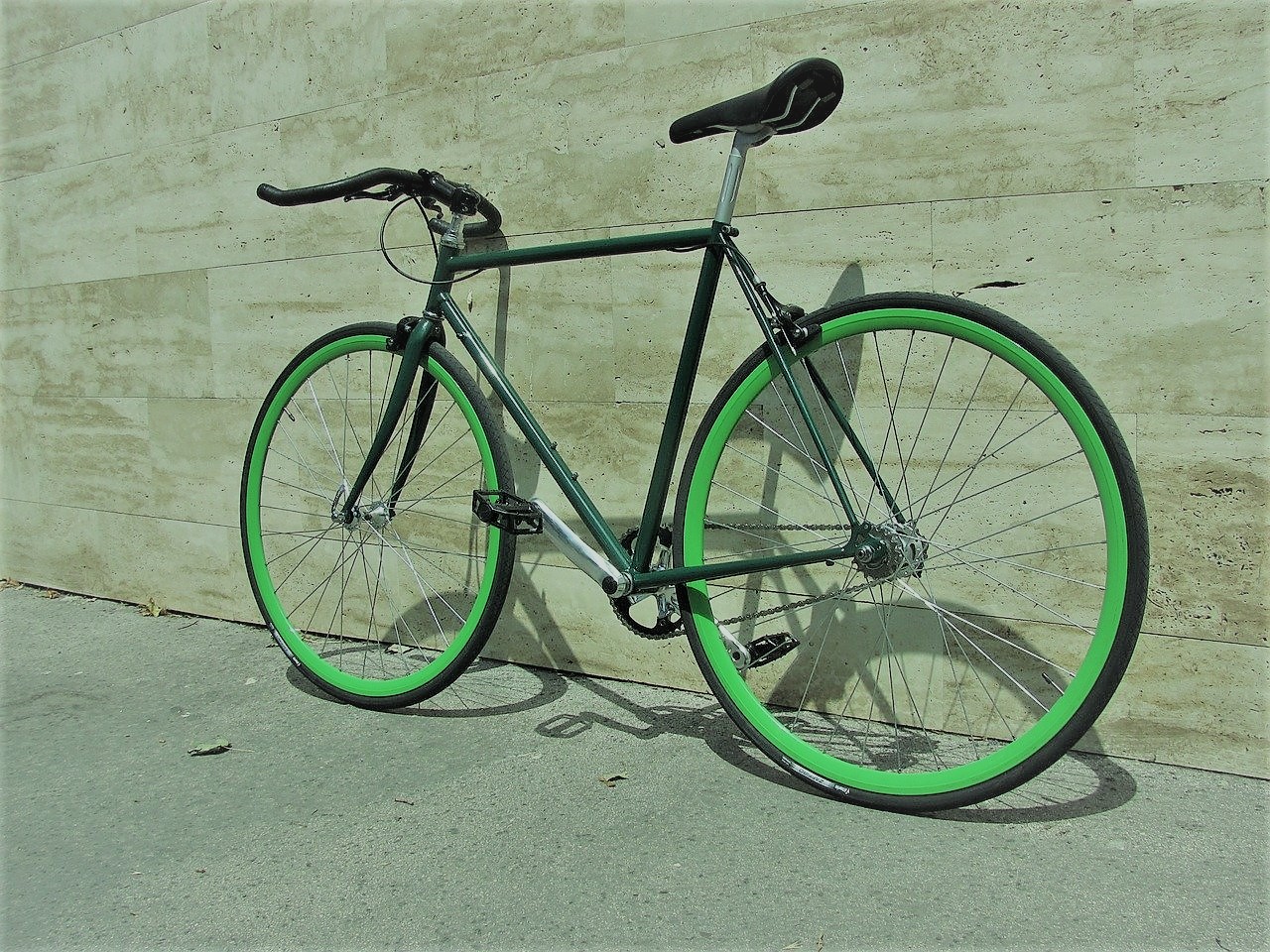
Fixie bike VS single-speed bike, which one do you prefer? Cycling is one of the most popular sports globally, and it does offer tons of benefits. After all, it is good to get some workout, nurture the environment, and probably save a lot of money compared to the average maintenance cost of car racing.
A single-speed bike is gaining more popularity among urban cyclists because it has numerous advantages over any other bicycle type. Today almost all major brands are offering their single-speed bike models in their product lineup. Usually, most of the single-speed bikes on the market have a small device called a flip-flop hub. This device allows you to switch the riding mode between fixie and freewheel.
However, riding in fixie bike mode is entirely different from that in freewheel bike mode. Let’s try to clarify and explain what it means by fixie bike mode and single-speed freewheel bike mode. When it comes to the difference between fixie bikes VS single-speed, it is crucial to consider what kind of cyclist you want to be and how comfortable you are. While both modes have a lot in common, there are many different aspects that we need to address.
>>> Check out the review of 8 great benefits of the single-speed bike
Fixie bike mode
The fixie bike has developed as a symbol of minimalism, urban chic, and a one-of-a-kind riding experience in the world of cycling. A fixie, or fixed-gear bicycle, is a deviation from the conventional multi-geared systems found on bicycles. It represents simplicity, precision, and a bond between rider and machine. This article will delve into the essence of fixie motorcycles, their riding characteristics, and the enthralling culture that surrounds them.
What is a Fixie Bike?
As the name implies, a fixie bike has a fixed-gear system, which means the rear cog is directly attached to the rear wheel. A fixie, unlike a multi-speed bike, lacks a freewheel mechanism that allows for coasting. Every pedal stroke generates motion, providing riders with a personal and exciting experience. The lack of gears simplifies the bike’s design, removing clutter and lowering maintenance requirements.
Urban Fixed-Gear: A Lifestyle on Two Wheels
The allure of fixie bikes extends beyond their mechanical design. They have become an emblem of urban cycling and a thriving subculture. Fixie bike riders are drawn to the minimalist aesthetic, sleek lines, and customized builds. Fixie bike culture emphasizes individuality, self-expression, and creativity, where riders often personalize their bikes with unique paint jobs, custom components, and accessories. Social gatherings, events, and group rides contribute to the tight-knit community that embraces the fixie lifestyle.
Key Features and Characteristics of Fixie Bike Mode
The fixie bike mode presents a distinct set of features and characteristics that set it apart from conventional bicycles.
Direct Power Transfer: The gearbox of a fixie bike is directly connected to the rear wheel, ensuring an unbroken connection between the rider’s legs and the movement of the bike. Every pedal stroke provides direct force to the wheels, enhancing control and transferring energy efficiently.
No Coasting: Unlike freewheel bikes, fixie bikes do not allow for coasting. This means that the pedals are in motion as long as the bike is moving. This one-of-a-kind feature necessitates constant pedaling and keeps riders engaged at all times, resulting in a more immersive and dynamic riding experience.
Braking: In fixie bike mode, braking is primarily accomplished through a technique known as skidding. By resisting the forward motion of the pedals, riders can slow down and come to a stop. Some riders also opt to install a front brake for added safety, particularly in situations that require sudden and controlled stops.
Simplicity and Minimalism: Fixie bikes are known for their simple design and simplicity. The fixie bike simplifies the number of components by eliminating complex gearing systems, resulting in lighter and more straightforward riding. Because of their ease of use and low maintenance requirements, fixie bikes are a popular choice for individuals looking for a hassle-free cycling experience.
Control and Responsiveness: A fixie bike requires a higher level of control and reactivity. Riders can maneuver precisely and quickly through urban surroundings because of the direct power transmission, which enables immediate acceleration and deceleration. Since there are no gears, there are no delays in gear change, resulting in a smooth connection between the rider and the bike.
Fixie Bike Gear Mechanism
Fixie bikes are renowned for having simple, uncomplicated gear mechanisms. They run on a fixed-gear system, where the rear cog is directly attached to the rear wheel, in contrast to multi-speed bicycles that have a variety of ratios. Let’s examine the fixie bike gear system in more detail and see how it functions.
In a fixie bike, the gear ratio is determined by the number of teeth on the front chainring and the rear cog. The chainring is the front sprocket that is directly attached to the crank arms, while the rear cog, also called a sprocket, is connected to the rear hub of the bike. The gear ratio affects the distance covered by the bike with each pedal revolution, determining how easy or hard it is to pedal.
Fixie bikes have a number of benefits, including the option to adjust the gear ratio to suit individual preferences and riding circumstances. Either the front chainring or the rear cog must be changed to adjust the gear ratio. Riders can customize their gearing by selecting chainrings and cogs with various amounts of teeth.
Fixie Bike Crankset
A fixie bike’s crankset typically consists of the bottom bracket, chainring(s), and crank arms. Fixie riders have a variety of crankset alternatives at their disposal, such as single chainrings for simplicity or double chainrings for more gear options. In order to provide the direct power transfer that characterizes the fixie bicycling experience, the crankset—a crucial component—converts the rider’s pedaling motion into rotational movement.
Fixie Bike Wheelset and Tires
A fixie bike’s wheels and tires are crucial to both its functionality and appearance. Because they are frequently strong and light, fixie wheelsets provide quick acceleration and nimble handling. Depending on the rider’s tastes, there are different tire alternatives available, from slick road tires for smooth urban terrain to larger tires with more traction for more daring journeys. The fixie bike’s overall performance and feel can be significantly influenced by the wheelset and tires that are selected.
Fixie Bike Maintenance: Keeping Your Ride Smooth and Reliable
Fixie bikes are known for their minimalistic design, which translates to lower maintenance needs compared to bikes with complex gearing systems. However, proper maintenance is still crucial to ensure a smooth and reliable ride. Here are some essential tips for maintaining your fixie bike:
Chain Maintenance: A crucial component, the chain needs to be cleaned and lubricated on a regular basis. To get rid of dust and make sure the chain moves smoothly, use a chain cleaner and a suitable bicycle chain oil. Check the chain tension frequently, and if necessary, adjust it.
Brake Check: While some fixie bikes rely on skidding for braking, others may have a front brake. Inspect your brake pads regularly to ensure they are in good condition and provide adequate stopping power. Adjust the brake tension and replace worn brake pads as necessary.
Tire Care: Monitor tire pressure and inflate them to the recommended level. Check for any signs of wear or damage, such as cuts or bulges, and replace the tires if needed. Additionally, keep an eye on the tread pattern to ensure sufficient traction.
Wheel Inspection: Regularly inspect your wheels for any loose spokes or damage. True the wheels if they become out of alignment. If you lack the necessary tools or experience, it’s best to have a professional bike mechanic perform wheel truing.
Check Bolts and Nuts: Ensure that all bolts and nuts on your fixie bike are properly tightened. Pay attention to components such as handlebars, stem, seat post, and crankset. Loose bolts can affect stability and safety while riding.
Routine Cleaning: Keep your fixie bike clean by regularly wiping down the frame, components, and rims. Use a mild detergent and water to remove dirt and grime. Avoid using high-pressure water as it can damage sensitive parts.
Regular Inspections: Conduct regular overall inspections of your fixie bike. Check the frame for any cracks or signs of damage. Examine the drivetrain, including the chainring, cog, and chain, for wear and replace them when necessary.
Professional Tune-ups: While fixie bikes require less maintenance, it’s still recommended to have periodic professional tune-ups. A qualified bike mechanic can perform a comprehensive check-up, ensuring that all components are in proper working order.
Fixie Bike Riding Techniques: Mastering the Art of Fixed-Gear Cycling
A particular set of skills are necessary when riding a fixie bike in order to maximize control, effectiveness, and safety. Learning these riding methods will improve your fixed-gear cycling experience, regardless of your level of competence. Here are some vital pointers to aid you in navigating the world of riding a fixie bike:
Pedal Control: When you ride a fixie bike, your pedals are constantly moving. Concentrate on keeping a fluid and even pedal stroke to keep control and stability. Avoid making quick, abrupt movements that can throw your equilibrium off.
Skidding and Braking: Skidding is a popular technique used for braking on fixie bikes. By resisting the forward motion of the pedals and applying backward pressure, you can lock the rear wheel and slow down. Practice skidding in a safe and controlled environment to develop this technique. Additionally, if your fixie bike is equipped with a front brake, use it as an additional means of stopping power, particularly in emergency situations.
Cadence and Pedaling Efficiency: The cadence describes how quickly you pedal. Your pedaling performance and entire riding experience can be improved by finding the proper cadence. Try out various cadences to see which one you find most comfortable. To increase power output, concentrate on making smooth, circular pedal strokes while including both push and pull motions.
Riding Posture: Maintain a proper riding posture to improve control and reduce strain on your body. Keep your back straight, shoulders relaxed, and elbows slightly bent. Distribute your weight evenly between the saddle and handlebars. This balanced position allows for better handling and maneuverability.
Anticipate and Plan Ahead: Fixed-gear biking necessitates a greater sensitivity to your surroundings. Keep a vigilant eye on the road, the traffic, and any potential hazards. Be prepared for terrain changes, such as hills or uneven ground, and modify your pedaling accordingly. You may face hard circumstances with confidence by being proactive and making plans in advance.
Riding with Traffic: Respecting traffic laws and regulations is essential when biking in urban areas. Use hand signals to turn or change lanes, convey your intentions effectively, and interact with other drivers on the road. When cycling in low light, be noticeable by using bright clothing and employing lights.
Learning to Coast: Even though fixie bikes lack a freewheel system for coasting, it’s important to understand how to “coast” correctly. You can simulate coasting even while the pedals are still moving by relaxing your legs and lifting your feet just a little bit off the pedals. This method can offer brief breaks during exhausting rides or when negotiating downhill stretches.
Practice and Progress Gradually: The ability to ride a fixie bike demands practice and familiarity. Start honing your techniques in a controlled setting, such as a deserted parking lot or a peaceful street. As your confidence and skill level rise, gradually step up the complexity of your rides, confronting various terrains and traffic situations.
Pros and Cons of the fixie bike
- Low weight
- Low maintenance cost
- Transmission is mechanically more efficient
- Requires less energy to move in the same gear ratio as freewheel
- Better control and handling compared to freewheel counterpart
- Provides smooth responsiveness and flexibility
- Lots of muscle training is required
- Not suitable for a hilly ride
- Not very practical to ride when it rains
Single-speed freewheel mode
The single-speed freewheel mode is considered to be the default mode of every single-speed bike.
The absence of a complex gearing system and other components enables it to be simple, lightweight, affordable, and easy to maintain. The single-speed freewheel mode is the preferred choice in the city limit with lots of flat roads because you don’t need a complex gearing system to assist you during the ride.
With necessary precaution, the single-speed bike is an excellent alternative to the multiple-gear bike. The single-speed freewheel bike is, in fact, a minimalist bike and, therefore, highly customizable.
Unlike fixie mode, a freewheel mode does allow you to coast down the slope without pedaling, and, with great speed, you can let the bike roll without pedaling.
Is single-speed mode reversible to fixed gear?
A small device called a flip-flop hub installed on a single-speed bike enables you to switch between 2 modes: fixed gear and freewheel. The flip-flop hub has two sprockets: left and right, and the rear wheel is reversible. Furthermore, one of two sprockets is fixed to the wheel and moves integrally while others are mounted on a ball bearing, making the wheel rotate independently of the sprocket.
How to prepare for a bike trip with a single-speed bike
To prepare for a bike trip with a single-speed bike, you have to make sure that you have installed the right bike accessories: bag, lights, and luggage rack but watch out for excess weight. Since you don’t have a multiple-gear ratio to assist you during the ride, it is advisable to carry as few items as possible.
Do check that your bike is comfortable enough to pedal smoothly on flat roads, but it must enable you to perform a few jumps. Finally, make sure that you study the cycling route in advance. You may begin with a cycling path and some shortcuts, if possible.
Pros and Cons of a single-speed freewheel bike
- Low maintenance cost
- Be able to switch between fixed and freewheel if flip-flop hub installed
- Few components mean less weight
- Highly customizable
- Compatible with any handlebars
- Perfect for commuting in the city limit
- Not suitable for a hilly ride
- The absence of a gearing system forces you to master the gear ratio
- Customization requires expert help
The Bottom Line
Mechanically, a fixed-gear bike and a single-speed freewheel bike have many things in common, and you may not notice any differences until you are on the saddle yourselves. A small device connected to the rear hub determines how the bike works.
In a single-speed freewheel bike, the rear hub is connected with a freewheel cog, which allows the wheel to rotate freely. On the other hand, the rear hub on the fixie bike has no freewheel cog equipped. Therefore, when the rear wheel starts rolling, the cog turns, and, finally, the pedal turns.
Anyway, modern single-speed bikes come with a flip-flop connected to the rear wheel. This small device enables you to switch between 2 modes: fixed gear and freewheel, so you can enjoy riding in two modes without buying an extra one. Try on two modes and find out what way is best for you.






